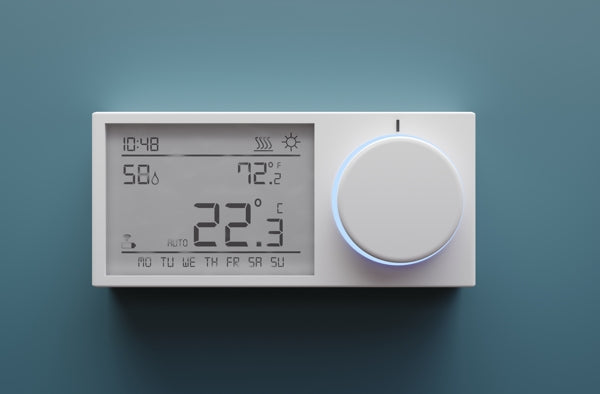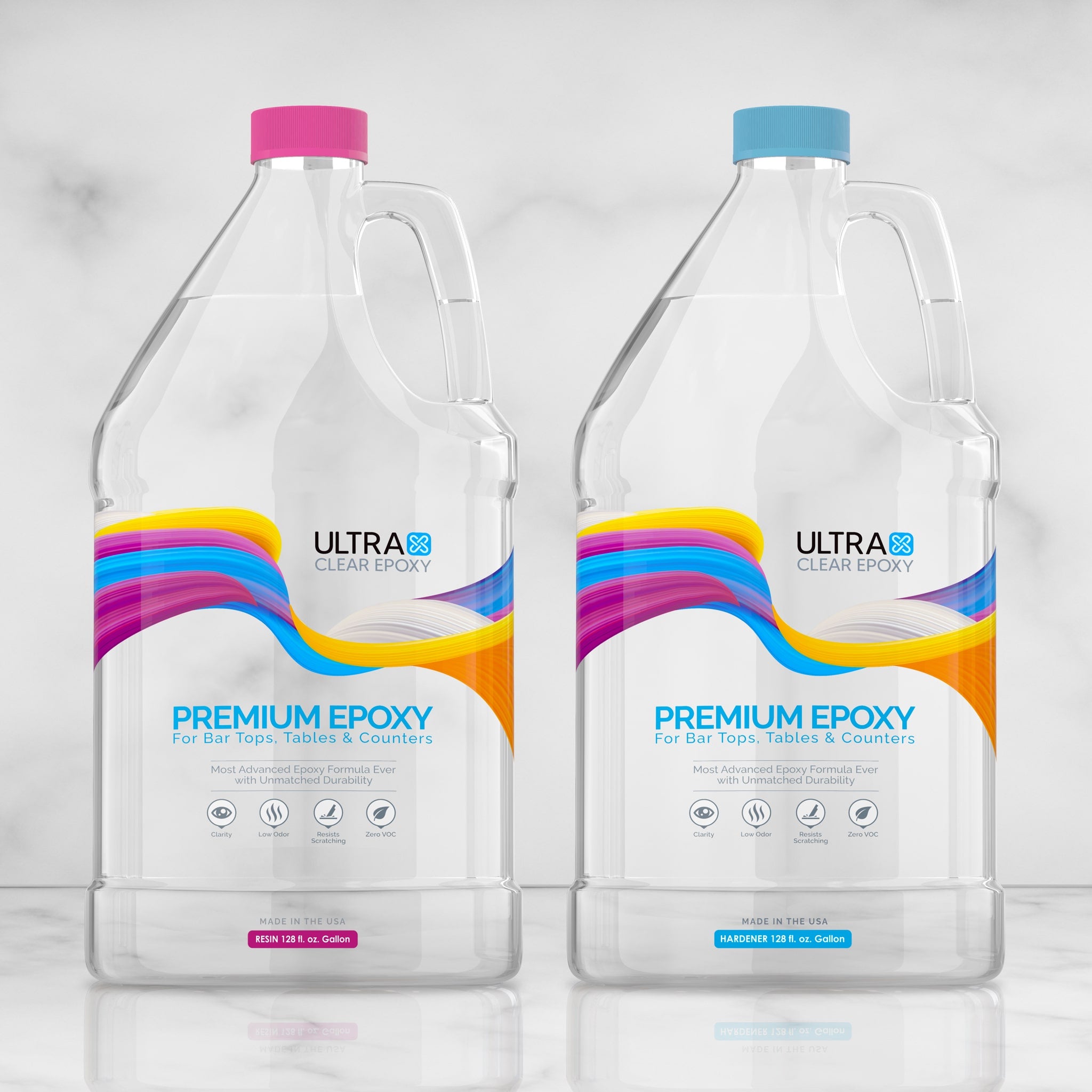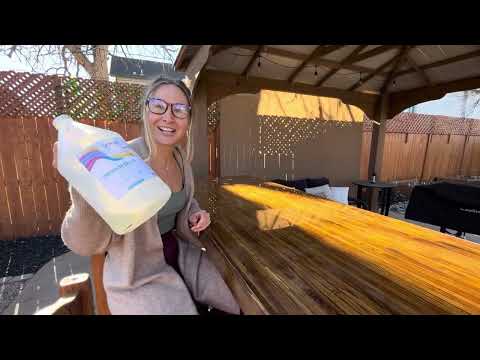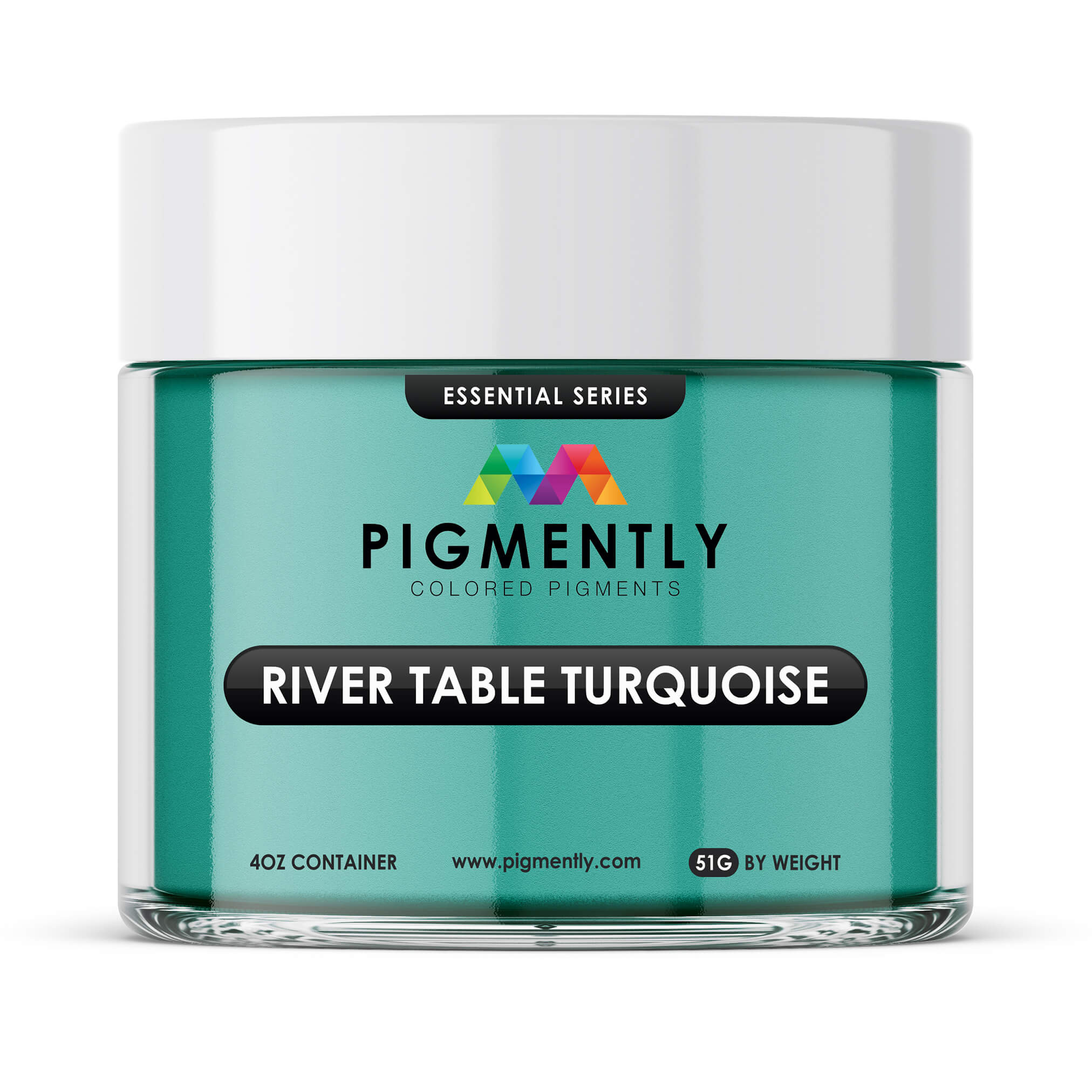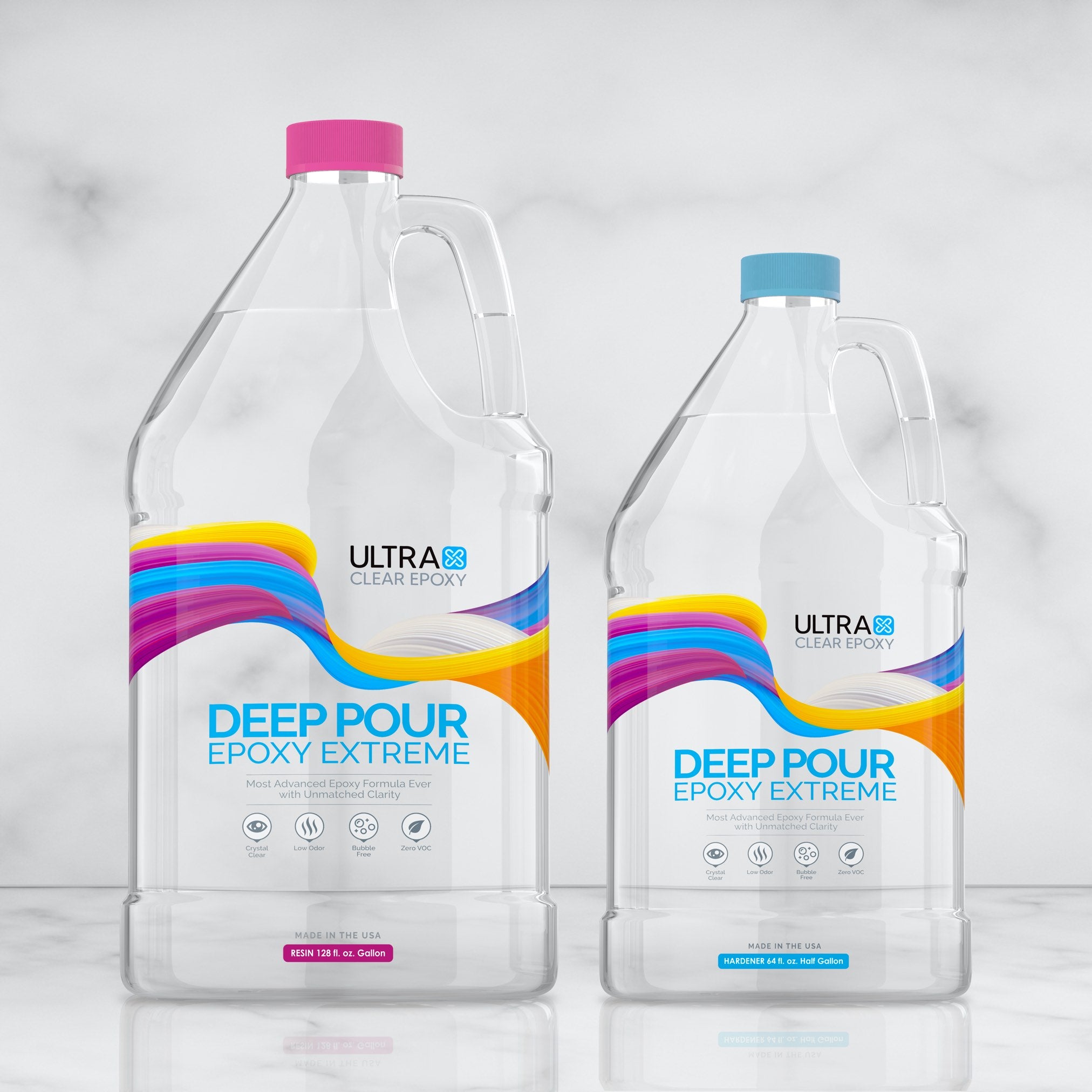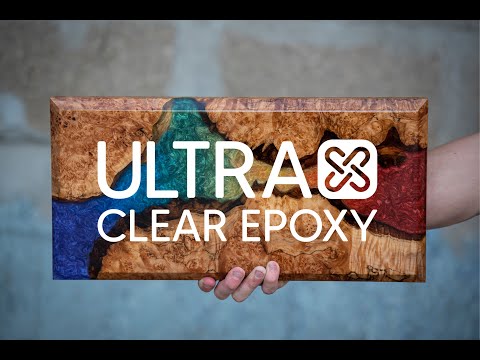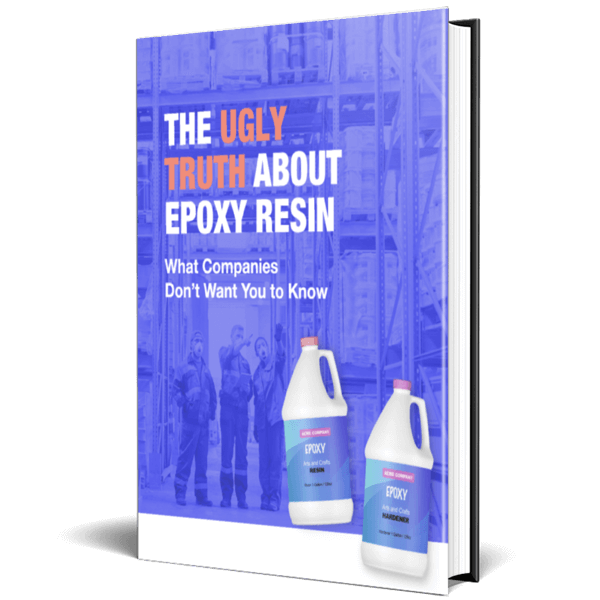Why Heat and Moisture Matter in Epoxy Work
Heat and moisture both play vital roles during the working, curing, and long-term stages of an epoxy project, each capable of enhancing or sabotaging your work. Though epoxy is an incredibly resilient material once it cures, it is very delicate prior to that, and the conditions leading up to a final cure have a strong influence on a project's outcome.
In this article, we’ll cover how temperature and moisture affect epoxy before and after it has cured. We'll break down what you need to watch for during the application and curing phases and how epoxy surfaces behave once fully hardened.
Whether you're pouring a river table, coating a kitchen counter, or making resin art, understanding these variables can be the difference between professional results and failed finishes.
How Temperatures Affect Epoxy Before It Cures
Environmental Temperatures and Why They Matter
Temperature is one of the most important factors to monitor when working with epoxy. Most epoxy resins, including UltraClear products, perform best in a room-temperature environment ranging from 70–75°F (21–24°C).
- If the ambient temperature is too cold, the epoxy may become thick and difficult to mix, increasing the chances of air bubbles and uneven curing.
- If it’s too hot, the working time can decrease drastically, potentially causing premature curing or heat distortion.
Maintaining a stable temperature throughout the entire curing process is essential. Sudden temperature drops can cause cloudiness, bubbles, or uneven finishes. It’s best to prepare your work area in advance, especially if you live in a region with fluctuating temperatures.

Heat and Other Aspects of Epoxy Work
Heat isn't just a background condition; it plays an active role in the application process. For example, gentle heating with a torch or heat gun is a common method used to release surface bubbles after a pour. However, overusing heat can scorch the resin or create waves in the surface. Conversely, failing to use heat properly can leave your surface riddled with unsightly bubbles.
Also, the temperature of the epoxy components before mixing matters. If your resin or hardener has been stored in a cold location, let them acclimate to room temperature before use. Cold materials combine poorly and can introduce more air into the mixture.
In very cold environments, the resin component of a two-part epoxy may crystallize. This can be fixed by warming the resin and waiting until it becomes fully liquid again, then keeping it within an appropriate temperature range until use.
How Moisture Affects Epoxy Before It Cures
Humidity and Its Effects During Curing
High humidity is another issue to watch for. Excess atmospheric moisture can interfere with the curing process, especially with lower-quality epoxies. Ideally, the humidity in your work environment should be below 60%.
In high-humidity environments, moisture can condense on the epoxy surface as it cures, resulting in a cloudy or sticky finish. This problem is more likely to occur when pouring in spaces without climate control, such as garages or basements.

Moisture from Other Sources
Moisture can also come from your materials. Embedding items like porous stones, green leaves, or fresh flowers can introduce water into the epoxy. These items must be thoroughly dried and, in many cases, sealed with a clear coat before embedding.
Wood is another common offender. If the wood you’re working with hasn’t been fully dried or sealed, it may release moisture into the epoxy, creating bubbles or adhesion issues. Applying a seal coat of UltraClear Bar & Table Top Epoxy before your main pour can help prevent this.

Ideal Environmental Conditions for Epoxy Projects
To achieve the best results when working with epoxy, creating a controlled environment is key. Fortunately, creating these conditions doesn’t require a high-end workshop. With a few well-placed tools and mindful setup, even a small garage or spare room can become a resin-safe zone.
Below, we talk about the recommended conditions and how to establish them.
Temperature—Perform Your Project in the Right Temperature Range
Epoxy at the right temperature will be able to cure a clear and strong finish in a timely manner.
- Keep your workspace between 70°F and 80°F—ideally 75°F.
-
If you're working in a cooler environment, use a space heater or heating pad under your mold (if safe to do so).
-
For hotter spaces, cool the room with air conditioning or work during cooler parts of the day.
Humidity—Monitor the Humidity Level
Ambient moisture in the air during a project can affect the clarity of the epoxy once it cures. Keeping the humidity below a certain threshold will prevent this from happening.
- Aim for 40%–60% relative humidity—never above 60%.
-
Use a digital hygrometer to monitor levels and set up a dehumidifier if needed.
-
Avoid opening windows on humid days, as this can allow moisture into the space.
Ventilation—Maintain Good Airflow
Air typically contains small particles (e.g., dust). Proper ventilation to disperse fumes while avoiding direct airflow onto an epoxy surface can keep your project safe without marring your finish.
- Minimize air movement during curing to prevent dust and debris from settling.
-
If you need ventilation, use filtered fans placed strategically to avoid direct air on the epoxy surface.
Dust Control—Keep Your Project Area Clean
A clean work space can ensure a clean epoxy finish.
- Clean the work area thoroughly before starting.
-
Wipe down surfaces and use a plastic tent or dust cover to protect curing pieces.
Stable Surface—Ensure a Level Work Surface Before Starting
A good work surface for epoxy will be stable and level, allowing the resin to spread smoothly across the substrate.
- Make sure your work surface is level.
-
Use a bubble level to check your table or mold base and adjust with shims or wedges.
Curing Protection—Shield Your Epoxy from Dust and Debris During Curing
- Cover your project loosely with a dust-free tent or cardboard box once poured to protect it from particles and drafts.
Lighting—Give Yourself Ample Lighting
Lighting doesn't affect epoxy directly, but it enables you to identify potential problems before it's too late to fix them.
- Good lighting helps detect bubbles, debris, or uneven pigment blending.
-
Consider a bright overhead light or even a headlamp for detailed work.
How Cured Epoxy Reacts to Heat and Moisture
Once cured, high-quality epoxy forms a non-porous, waterproof seal that resists staining and moisture damage. This makes it perfect for kitchen counter tops, tables, and other household surfaces exposed to water or spills.
For example, UltraClear Bar & Table Top Epoxy handles temperatures up to 135°F without issue. This level of heat resistance protects against warm dishes, cups of coffee, or laptops. Still, it’s best to use trivets or heat-resistant mats when placing hot pans or baking dishes on an epoxy surface to prevent softening or print transfer.
Epoxy’s slick, non-absorbent finish makes it easy to clean and maintain. Unlike wood or concrete, it doesn’t allow water to soak in and cause warping, staining, or mold. This is especially important for kitchens, bars, and bathrooms.

How Budget-Brand Epoxies Struggle with Heat and Moisture
Budget-brand epoxies, especially those manufactured overseas with little oversight, often lack the durability and consistency needed for professional results. These products may be less resistant to heat, softening or yellowing over time even under normal household temperatures. They also tend to have higher shrinkage rates, leading to cracks or separation.
Inconsistent formulations and low-grade materials make cheap resins prone to moisture problems as well. Curing issues, tacky finishes, and cloudiness are more likely when exposed to even moderate humidity or embedded moisture. These issues can turn a straightforward project into a frustrating, time-consuming process.
Furthermore, health and safety are also major concerns. Budget resins may contain unknown additives or solvents, releasing harsher fumes or causing allergic reactions. They typically lack the safety certifications and documentation that professional resins like UltraClear Epoxy provide.
Learn more about the importance of your epoxy choice here.
Why UltraClear Epoxy is Worth the Investment
UltraClear Epoxy offers industry-leading performance and peace of mind. All of our resins are made in the USA with strict quality control, delivering consistent results in all climates.
-
UltraClear Bar & Table Top Epoxy: Durable, glossy, and excellent for sealed surfaces exposed to heat or moisture. This epoxy is designed to hold up in high-traffic situations where heavy, rough usage is frequent.
-
UltraClear Deep Pour Epoxy: Designed for thick, crystal-clear pours up to 2 inches deep in a single pour. This is the go-to choice for many types of larger art projects that require an extra-thick epoxy finish.
-
UltraClear Art & Craft Epoxy: Best for shallow pours and pigment blending, perfect for resin art and trays. Use this for resin art and any type of project that demands nuanced application for aesthetic purposes.
FAQs: Temperature, Moisture, and Epoxy
What happens if I pour epoxy when it’s too cold?
Cold temperatures thicken the epoxy, increase bubble formation, and slow the curing process. This can lead to an uneven or sticky surface.
Before mixing epoxy, ensure that it is at an appropriate temperature. For most resins this is between 70°F to 80°F.
Is it okay to cure epoxy in a garage or shed?
Only if the temperature and humidity are controlled. Otherwise, your epoxy may cure unevenly or react poorly to moisture.
You can use space heaters and dehumidifiers as needed to provide the right conditions for curing. Some users opt to construct a temporary enclosure for their project, providing a smaller space to control.
Can I embed flowers in epoxy?
Yes, but the flowers must be fully dried and ideally sealed to prevent moisture contamination during curing.
We've written a guide on this, which you can find here.
How do I know if my room is too humid?
Use a hygrometer to measure humidity. Digital hygrometers can be acquired fairly easily and a good one with have a reading accurate to a couple of percentage points.
Levels above 60% can interfere with curing, especially for budget epoxies, so be sure to keep your humidity levels below this at all times during the project.
What is the ideal cure time and environment?
For UltraClear Epoxy, a stable room-temperature environment (70–75°F) with low humidity is ideal.
Full surface cure takes about 72 hours. Internal hardening will continue for a couple of weeks, at which point epoxy reaches peak strength.
Can heat be used to fix epoxy bubbles?
Yes. A heat gun or torch can be gently passed over the surface after pouring to eliminate surface bubbles.
Will cured epoxy handle hot pans?
Not directly. While UltraClear Bar & Table Top Epoxy resists heat up to 135°F, always use a trivet or mat for hot cookware, which can exceed this temperature.
How do I protect an epoxy surface in a kitchen?
Use cutting boards, trivets, and clean regularly with mild soap and water. Avoid harsh abrasives and prolonged exposure to heat.
Although UltraClear Epoxy products cure to a food-safe finish, they are not meant for food preparation. Never use them as a surface for cutting or mashing.
Have Questions? Want Advice? We're Here to Help!
If you have any questions about how temperature and moisture affect epoxy resin, or if you'd like assistance in planning an epoxy project, please reach out to us at UltraClear Epoxy—our epoxy experts are ready to assist!
You can contact us via phone or email here. During business hours, you can also text chat online with one of our resin specialists by clicking the Help button at the bottom of your screen.
In our online store, you'll find a variety of useful tools and supplies, ideal for resin projects, plus our award-winning UltraClear Bar & Table Top Epoxy and our UltraClear Deep Pour Epoxy.
UltraClear Epoxy—Trusted by over 1 Million+ Happy Customers

